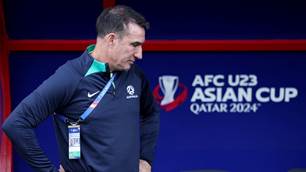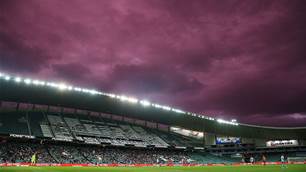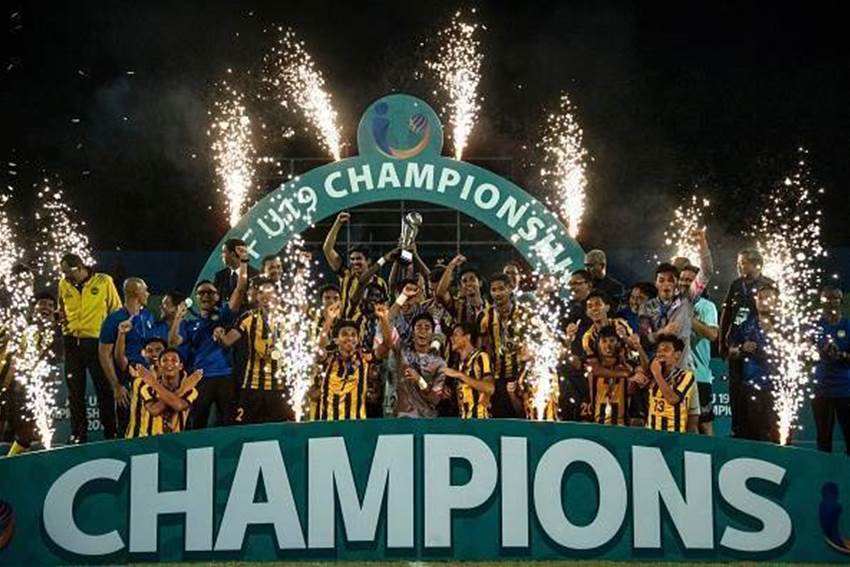The stats don’t lie. Australia’s U-23 Olyroos go into next week’s crucial AFC Tokyo 2020 Olympics qualifiers as an unseeded nation. Why?
It’s because Australia has only qualified for five out of the last 14 junior AFC tournaments.
And for the Olympics, Australia has failed to qualify for the two most recent games in Brazil and London.
In fact, the last time the Olyroos qualified was in 2008 at the Beijing Olympics. This all serves as a worrying backdrop to the latest Australian U-23 campaign, which kicks off next week in Cambodia.
The seeding means Australia has regional heavyweight Korea Republic in their group (along with the hosts and Chinese Taipei).
It’s not the luck of the draw, it’s the seeding based on green and gold performances in Asia.
If Australia does not top the group, it could spell the end of the road to Tokyo.
The Olyroos will need to be one of the top four second-placed nations in order to progress to the final AFC qualifiers in Thailand next January.
The four best second-placed nations across all 11 groups played in the region over the coming fortnight mean the heat will be on those who don't top their groups.
All in all, not an easy task. And hence why coach Graham Arnold is taking it very seriously.

With this in mind, this week, the Aussie U-23s have been in the Malaysian capital Kuala Lumpur where the conditions will mirror those in Phnom Penh.
It's expected to be around 38 degrees and 80% humidity for Australia's 5 pm and 8 pm kick offs at the National Olympic Stadium.
On the eve of these crucial Olympics 2022 qualifiers, Olyroos head coach Graham Arnold warns the reality for Australian football is becoming very clear.
Arnold took the dual Socceroos and Olyroos’ role because he cares deeply about the future of the game and the quicker development of Olyroos into Socceroos.
With only around 25 Aussie players eligible for the national team playing in the A-League, Arnold can see the urgency around player development.
“Obviously there are people who aren’t happy with us coming to Asia early [to prepare] but you can’t turn up to these tournaments with no games and no proper preparation and acclimatization," he said.
And he can see how nations in South-East Asia are improving at a rapid pace and worries that Australia could simply be left behind over the next decade.
“Since I left the national team in 2010 to now, the improvement in these nations in South-East Asia is ridiculous.
“A decade ago you’d beat Vietnam 8-0 in junior national teams. Three years ago they beat us 5-0 in the U-20s. It’s come so far.
“We’ve got to wake up!”

It’s a view taken by Malaysia’s U-23 assistant coach and former Socceroo midfielder Brad Maloney.
“I 100% agree that development in South-East Asia, in general, is getting better. The investment in the game in certain areas is enormous and the focus is on football," said the former NSL star who has been based in SE Asia the last five years.
“It’s the number one sport and they want to succeed and be a part of that in South-East Asia. And youth development is a huge thing here.
“A few years back Australia may have been far superior to a lot of these countries but these days you can’t underestimate them.
“If we don’t look over our shoulder,” Maloney added, “some of these countries will surpass Australia.
“I’m not even sure it’ll take 10 years to surpass Australia," he warned.
With that dire warning, look at Thailand, Vietnam, Singapore, Philippines, Malaysia, and other SE Asian nations.
As an example, Vietnam defeated Australia at the U-23 level a year ago.
These countries are playing on a far more regular basis against each other in South-East Asian what Australian national teams get to play, with tournaments such as the biennial Suzuki Cup, the Asian Games and U-23s tournaments.
This helps their development even further, Maloney says.
A good example is Thailand, who drew with the Socceroos in Bangkok and narrowly lost 2-1 in the last round of 2018 World Cup qualifiers.
What’s more, Vietnam defeated Australia 1-0 at the Under-23 AFC Championships in China in January 2018.
Add a 63% internet penetration in ASEAN coupled with a huge population and fan engagement potential with ASEAN home to 402 million active social media users, and little wonder the Suzuki Cup signed its first major Chinese sponsor to last year's event.
Corporate growth and football development working together.

The stats don’t lie.
The Australian U-23s got a stark reminder of the improvement in South-East Asian football last Thursday night when in their first game together, the Olyroos were defeated by Malaysian Super League outfit Petaling Jaya FC 2-0.
A useful exercise with the result of secondary importance to giving minutes to players and getting the group used to each other in their first official match together.
But it showed, with the quality of foreign players, the investment being put into the game at club level in Malaysia. That's happening across ASEAN.
Australia faces Cambodia on March 22 followed by Chinese Taipei and favourites to top the group, Korea Republic.
Arnold was in Cambodia last month to scout the hosts in a warm-up tournament to the Olympics qualifiers. He was impressed.
“I watched Cambodia who played Malaysia and Indonesia and I went, ‘wow’. You can’t underestimate them, and I don’t get this mentality we can just turn up and play.
“Technically, these South East Asian nations are so gifted and quick and agile. We have to be at our best.
“I do believe I’ve picked the best squad…
“If you turn up cold, you’re dead.
“In this case, it’s a crash course for us in preparation. And it’s not an unlucky draw, it’s on past results.”
On Sunday night, the Olyroos face Malaysia U-23s in their final hitout in Kuala Lumpur before jetting off to Cambodia.
“You can’t afford to take a second-rate team to Asia,” Arnold concluded.
Related Articles

Campaign of pain: FA's Olyroos inquest will pile heat on Vidmar

Irankunda hit by shock Olyroos snub













